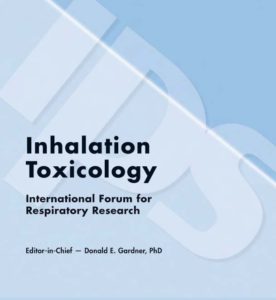There is no doubt that firefighters put their lives on the line to protect us. From wildfires to house fires and everything in between, these brave men and women have always been there when we need them most.
Firefighters are also exposed to large amounts of toxic chemicals in the course of their daily duties. In some cases, these chemicals can even cause long-term health problems for those who work with them regularly.
This article will explain what AFFF foam is, how it works, and why it’s so dangerous for first responders like firefighters.
What is AFFF?
AFFF (Aqueous Film-Forming Foam) is a firefighting foam that is used to extinguish flammable liquid fires. It contains a mixture of water, fluorochemical surfactants, and foam stabilizers. When applied, the foam creates a barrier that separates the fuel from the air, preventing the fire from spreading.
AFFF foam is commonly used in industrial and military settings, as well as at airports and other transportation hubs. However, AFFF foam has been found to contain per- and polyfluoroalkyl substances (PFAS), which are persistent, bioaccumulative, and potentially harmful to human health and the environment. As a result, there have been concerns and lawsuits over the use of AFFF foam and its impact on communities and natural resources.
The History of AFFF
AFFF was first developed in the 1960s as a firefighting foam that could quickly extinguish fires involving flammable liquids. It was initially used by the US military and later adopted by civilian firefighters and industrial facilities.
AFFF foam was considered highly effective and widely used due to its ability to rapidly extinguish fires and prevent re-ignition. AFFF foam has been used in various settings, including airports, oil refineries, and military installations.
Lawsuit Details
The AFFF Firefighting Foam Lawsuit is a class action lawsuit that was filed by former firefighters, military personnel, and others who were diagnosed with cancer after years of exposure to AFFF.
Plaintiffs in the lawsuit allege that AFFF foams manufacturers failed to warn the public about the health risks of PFAS exposure and did not take steps to prevent contamination of the environment because of it.
AFFF lawsuits were filed against 3M, DuPont, and other companies that manufactured firefighting foam products.
The recent AFFF lawsuit update states that lawyers believe the pressure of the cases may bring a settlement deal with the manufacturers sometime this year.
Health Effects
According to Environment News Service, the health effects of AFFF exposure can be severe. AFFFs contain perfluorooctanoic acid (PFOA) and/or perfluorooctane sulfonate (PFOS), which are two types of PFAS. High exposure to this has been linked to cancers of the kidneys, testes, thyroid, ovaries, and prostate, as well as non-Hodgkin’s lymphoma.
Higher mortality and kidney cancer incidences were also observed in individuals with high exposures to PFAS. The health risk is also present in plant or residence in the surrounding community that has contaminated drinking water because of AFFF.
If you think you may have been exposed to AFFF firefighting foam, you must seek medical attention immediately so that any damage can be properly assessed and treated as soon as possible.
Environmental Impact
It’s important to note that AFFF is toxic to fish and other aquatic life, which can contaminate drinking water. In addition, it can cause soil contamination if it enters the soil or groundwater. The foam also causes air pollution when it evaporates into the atmosphere.
It’s no surprise then that AFFF has been linked with numerous health problems in humans, from cancer to reproductive issues, and environmental damage as well as animal deaths.
Prevention and Treatment
You can prevent exposure to the toxic chemicals in AFFF firefighting foam by:
- Avoiding areas where AFFF is used. If you have been exposed to this substance at work, you may want to consider changing jobs or working with a different employer who does not use this type of foam.
- Wearing protective clothing and gloves when working with the chemical. This will help minimize direct contact with it while also protecting your skin from irritation or burns if any spills occur.
- Washing hands thoroughly after coming into contact with the substance, especially before eating or drinking anything else during the day (or night). In addition, showering as soon as possible after being exposed is also recommended because it helps remove any remaining residue on your body.
If You Think You Were Exposed to Toxic Chemicals, You May Be Entitled to Damages
According to The Sydney Morning Herald, 3M, the main accused in the case faces a legal claim of up to USD 40 billion in the product liability lawsuit. The trial, to begin in June, will be a landmark case in U.S. legal history. The case has absorbed the claims of 18 states and territories in the US as well as 100 water providers who demand compensation for filtering PFAS from drinking water supplies.
If you think that you were exposed to toxic chemicals and are suffering from health problems as a result, it’s important to know your rights. The good news is that many people who have been exposed to AFFF firefighting foam are eligible for compensation through class action lawsuits.
Conclusion
If you think you were exposed to toxic chemicals like PFAS, you may be entitled to damages. The AFFF Firefighting Foam Lawsuit is an important issue that needs your attention and support. If you or someone you know has been affected by this issue, please contact an attorney today.





Be First to Comment